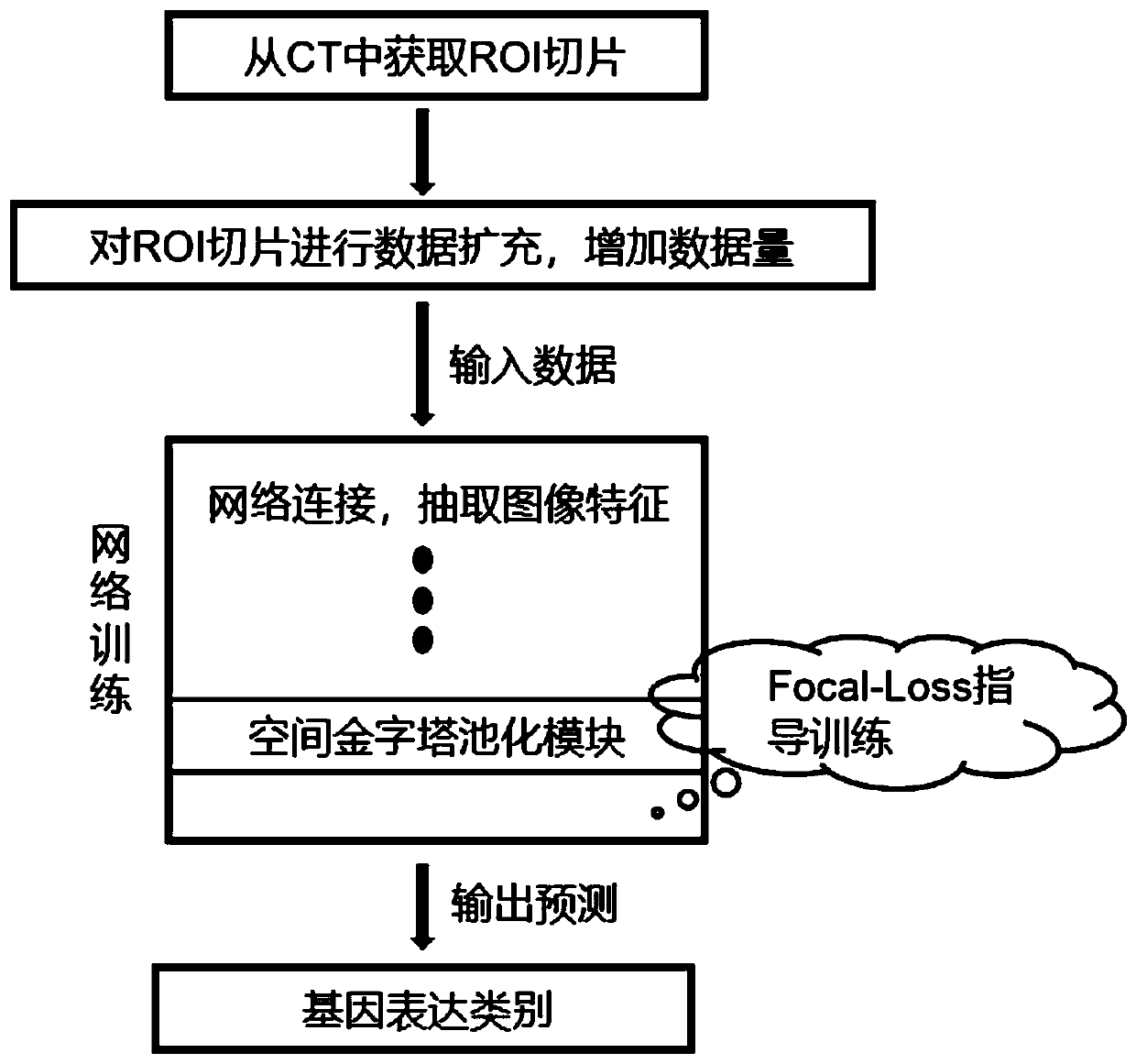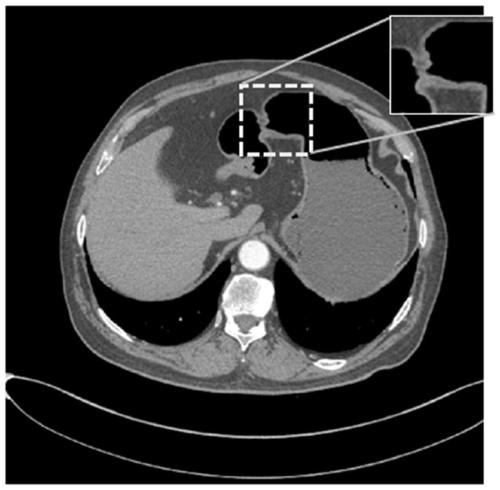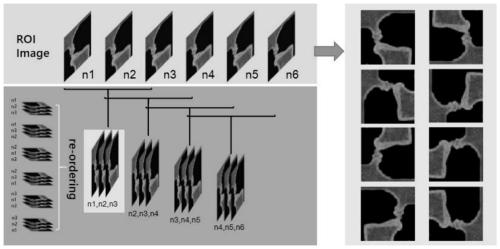Method for automatically predicting gene expression categories based on cancer CT images
A gene expression and CT image technology, applied in the field of image processing, can solve problems such as lack of attention, identification, and difficulty in collecting tumor CT data sets
- Summary
- Abstract
- Description
- Claims
- Application Information
AI Technical Summary
Problems solved by technology
Method used
Image
Examples
Embodiment
[0052] refer to figure 1 , figure 2 , image 3 as well as Figure 4 , the present invention uses CT images taken by cancer patients to extract ROI slices containing tumor parts by delineation, and performs a series of data expansion methods to greatly increase the amount of data. Then design the network model, use the pyramid pooling module to make the model not limited by the input of fixed size, and use the Focal-Loss function to adjust the loss to better train the model. Finally, the predicted gene expression category of each slice can be obtained, and the prediction of each slice can be fused to realize the prediction of tumor-level genes. The specific operation is carried out according to the following steps;
[0053] 1) Table 1 shows 20 gastric cancer CT data collected from a hospital with HER-2 gene mutation detection results. The training set and test set are divided in a 3:1 manner. Such as figure 2 As shown, firstly, the CT sequence of each sample in the tra...
PUM
 Login to View More
Login to View More Abstract
Description
Claims
Application Information
 Login to View More
Login to View More - R&D
- Intellectual Property
- Life Sciences
- Materials
- Tech Scout
- Unparalleled Data Quality
- Higher Quality Content
- 60% Fewer Hallucinations
Browse by: Latest US Patents, China's latest patents, Technical Efficacy Thesaurus, Application Domain, Technology Topic, Popular Technical Reports.
© 2025 PatSnap. All rights reserved.Legal|Privacy policy|Modern Slavery Act Transparency Statement|Sitemap|About US| Contact US: help@patsnap.com



